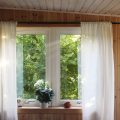
Sound pollution is the bane of modern living. Everyone tries to be louder than the next and unwanted noises attack your eardrums all the time. It all made worse by terrible building acoustics. And when sound pollution is becoming the standard of the urban environment, problems arise. Stress, crimes, and various health problems are often associated with sound pollution.
Architects supposedly understand that sound matters and yet some still put form over function. One example is the move toward open floor-plan, which is detrimental when it comes to performance in schools and offices.
In a school environment, where hundreds or even thousands of students gather in one building, open floor plan translates to increased sound pollution. Students must listen very closely to decipher what the teachers are explaining.
It’s the same thing for office spaces. Imagine that you’re a programmer working on your desk. You’re concentrating on a piece of code while your coworkers are talking about nonsense right next to you. It will take quite a while before you get back on track and focus back on the code you’re writing. Your productivity dips because there’s nothing between you and distracting noises.
“So, the problem lies in the open floor-plan, right?”
Not quite. Distracting sound is an inseparable experience for anyone inside whatever building. Even in old school buildings, the problem of bad acoustic remains true.
It’s no longer a secret that students who sit at the back of the class often complain that they cannot tell what the teachers are talking about. Before we blame the teachers for being bad at teaching or not speaking loud enough, we should have a closer look at the commonly terrible acoustics in classrooms.
The contracts for building schools go to the lowest bidder. Often times, acoustic features and soundproofing are not even part of the bid.
“Does this mean government must put the initiative in making buildings and urban environments easier on the ears?”
Of course. In Europe, Switzerland to be exact, the local governments are already taking the necessary steps to put acoustic features prominent in urban designs. Building positions, proportions, and shapes are regulated to reduce reverberations from traffic noise.
City planners and architects will focus not only on the sounds inside the buildings but also the environment where the buildings reside.
In time, facades dominated by glass and steel will be relics of the distant past. City designers will plant more trees to act as sound barriers. Sand and gravel will replace clay brick and poured concrete for sidewalks.
“What about at home?”
Acoustic is also essential for homes. Let’s suppose you’re making a home theater room. Do you prefer a room with good acoustic or a room in which all sound bounce around and incomprehensible?
Good acoustic in homes will benefit everyone and not just the ones looking forward to making a superb home theater setup.




